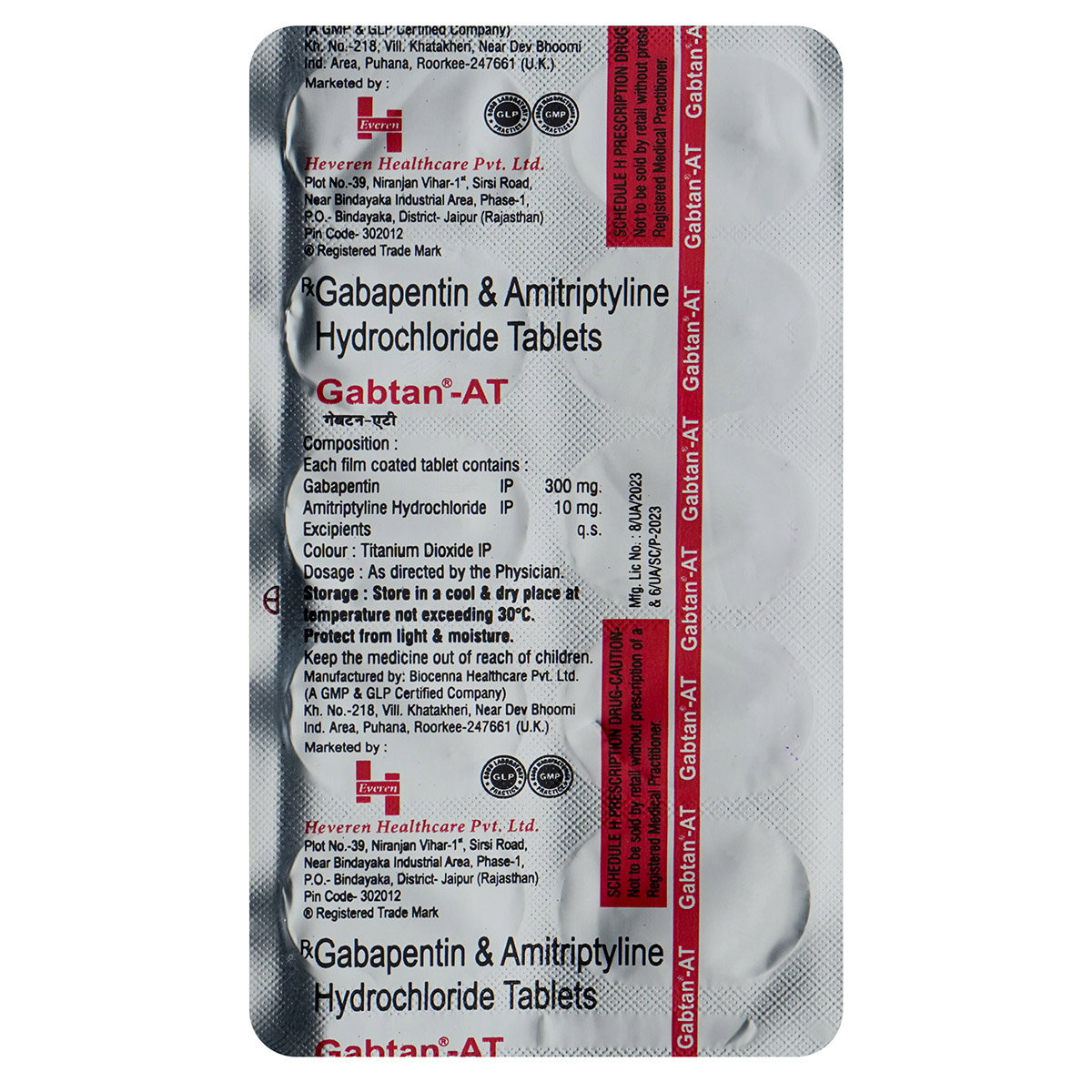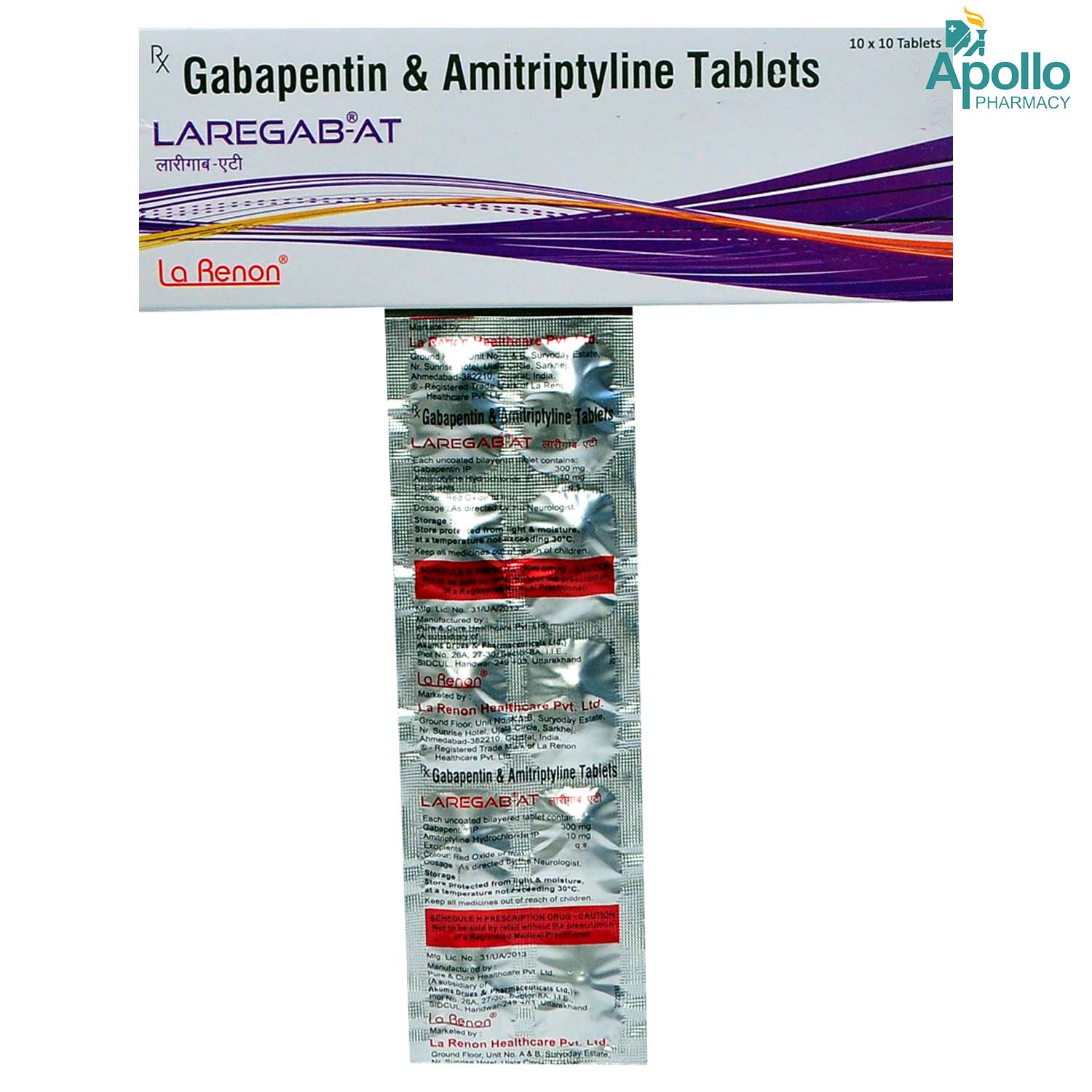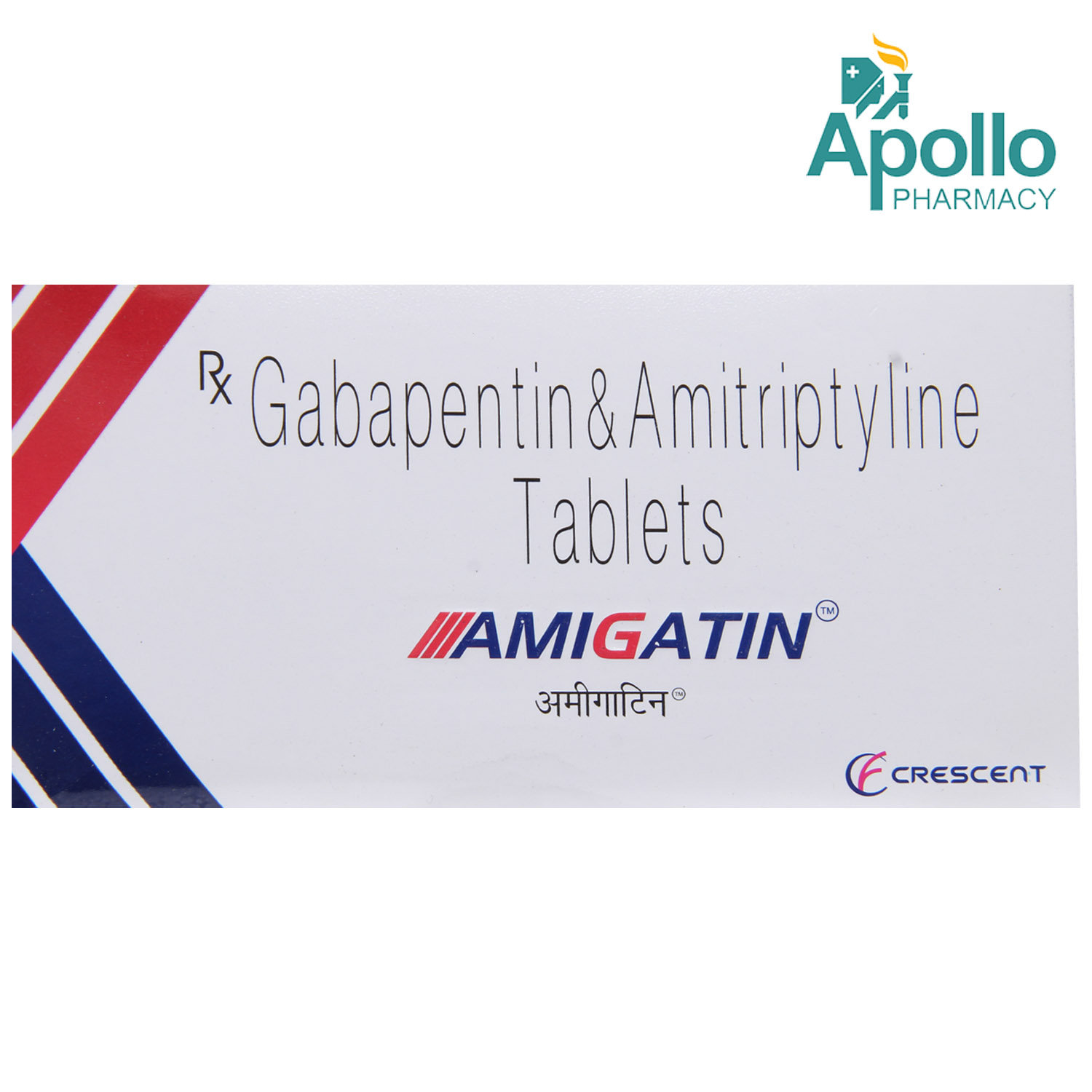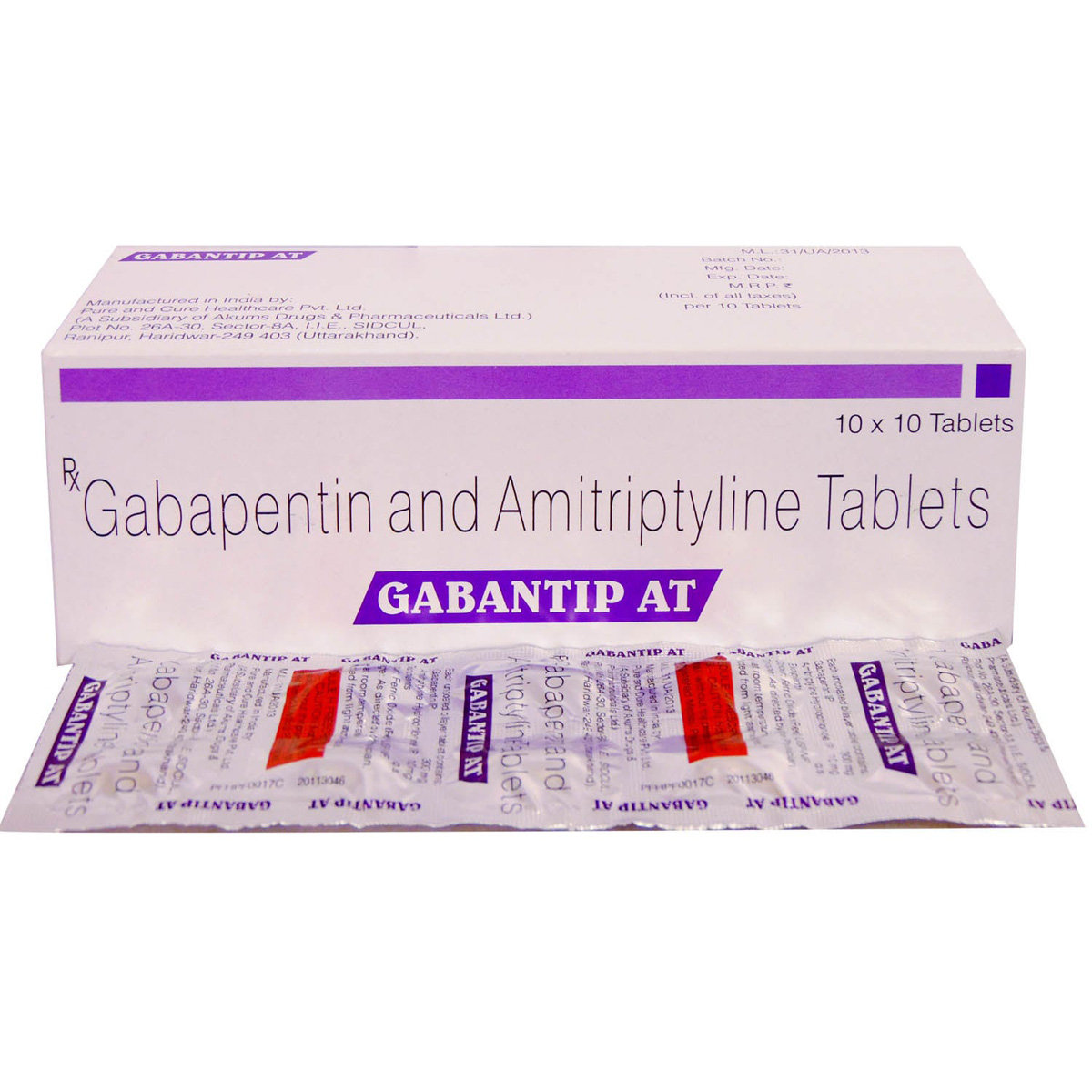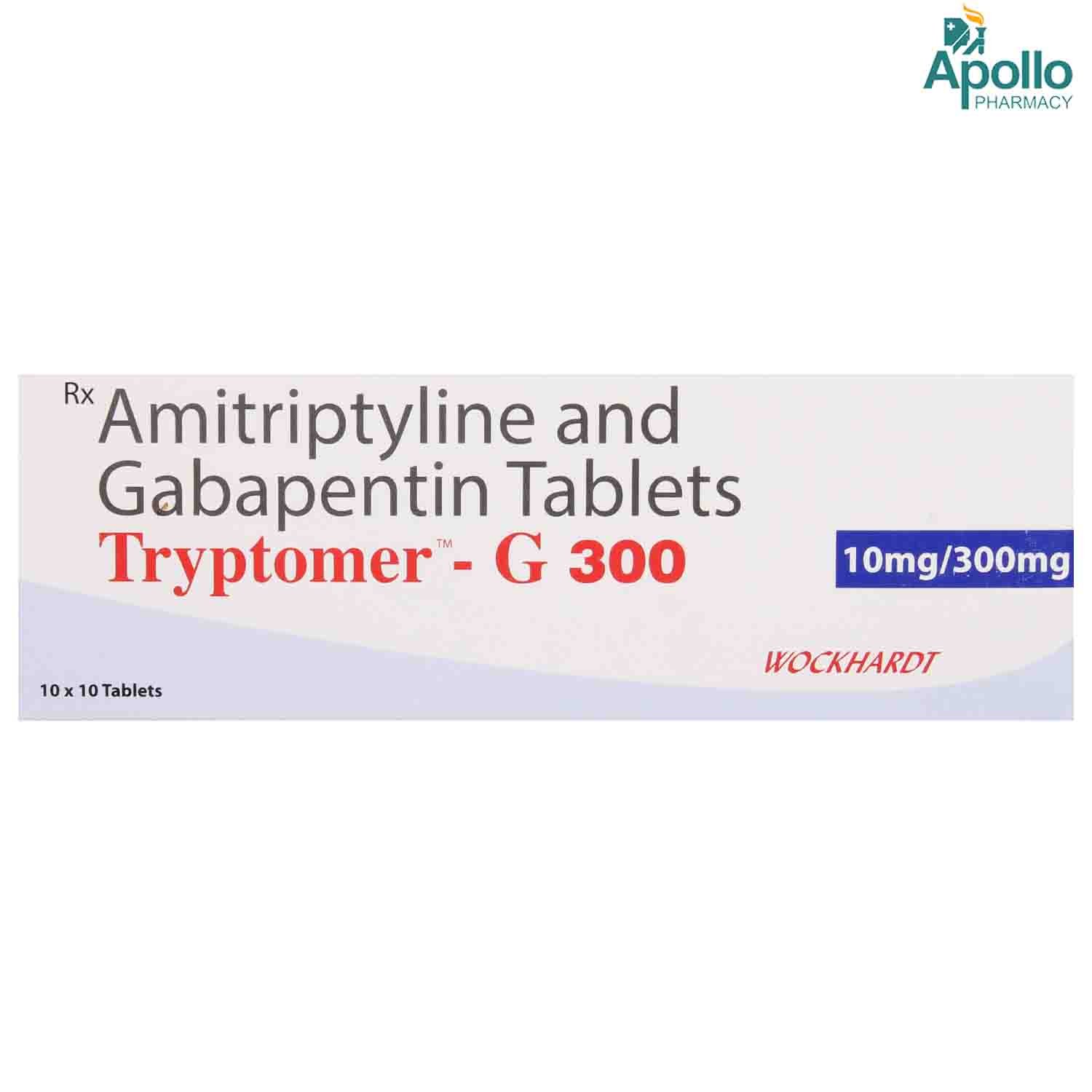- Home
- Adgaba-AT 100 Tablet
Adgaba-AT 100 Tablet Substitute
Adgaba-AT 100 Tablet Substitute
Medicine Composition:
AMITRIPTYLINE-10MG + GABAPENTIN-300MGAll Substitutes & Brand Comparisons
RX
StayHappi Gabapentin+Amitriptyline 300mg/10mg Tablet
₹77.78
(₹7.0 per unit)
36% CHEAPERRX
Nuroxy AM 300mg/10mg Tablet
₹116
(₹10.44 per unit)
4% CHEAPERRX
Ravigab AT Tablet 10's
RG PHARMA HEALTHCARE PVT LTD
₹155
(₹13.95 per unit)
27% COSTLIERRX
Gabatryp Tablet 10's
Propel Healthcare
₹168.5
(₹15.17 per unit)
38% COSTLIERRX
Gabalex-AT Tablet 10's
Zaiva Lifesciences Pvt Ltd
₹179
(₹16.11 per unit)
47% COSTLIERRX
Myolin-AT Tablet 10's
Solarium Pharmaceuticals
₹199
(₹17.91 per unit)
63% COSTLIERRX
Gabtan-AT Tablet 10's
HEVEREN HEALTHCARE PVT LTD
₹201.5
(₹18.14 per unit)
65% COSTLIERRX
Amigaba Tablet 10's
Icon Life Sciences
₹229.5
(₹20.66 per unit)
88% COSTLIERRX
Gamagab-AT Tablet 10's
Scepter Lifesciences Pvt Ltd
₹230
(₹20.7 per unit)
89% COSTLIERRX
Gabaval AT 300 Tablet 10's
Walnut Life Sciences Pvt Ltd
₹245.5
(₹22.1 per unit)
101% COSTLIERRX
Laregab AT Tablet 10's
La Renon Healthcare Pvt Ltd
₹254
(₹22.86 per unit)
108% COSTLIERRX
Amigatin Tablet 10's
Crescent Therapeutics Ltd
₹254.5
(₹22.91 per unit)
109% COSTLIERRX
Jotter AT Tablet 10's
Kiosence Health Care Pvt Ltd
₹257.5
(₹23.18 per unit)
111% COSTLIERRX
Gabantip AT Tablet 10's
Sun Pharmaceutical Industries Ltd
₹262.5
(₹23.63 per unit)
115% COSTLIERRX
Tryptomer G 300 Tablet 10's
Wockhardt Ltd
₹338
(₹30.42 per unit)
177% COSTLIER

When Should You Consider Switching from Adgaba-AT 100 Tablet ?
Patients may explore substitutes in the following scenarios:
- High monthly cost of Adgaba-AT 100 Tablet
- Non-availability in local pharmacies
- Generic recommendation by a doctor
- Side effects or better tolerability with alternatives
What to Know Before Switching
Before you switch from Adgaba-AT 100 Tablet to another medicine, here are some important points to keep in mind:
Same salt, different brands:
Most substitutes contain the same active ingredient - AMITRIPTYLINE-10MG + GABAPENTIN-300MG, but the fillers, coating, or manufacturing quality may vary slightly.
Consult your doctor first:
Even if the salt is the same, your doctor can confirm if the substitute is right for your condition, dosage, and health history.
Watch out for allergies or reactions:
Some people may react differently to certain brands due to inactive ingredients. If you notice any side effects, inform your doctor immediately.
Price ≠ effectiveness:
A lower-priced substitute doesn't mean it's less effective. Many generic medicines work just as well as branded ones.
Check the dosage form and strength:
Always match the substitute’s strength (e.g., 5mg, 10mg) and form (tablet, capsule, syrup) with what your doctor prescribed.
Uses
Adgaba-AT 100 Tablet is used to treat Neuropathic pain. The detailed uses of Adgaba-AT 100 Tablet are as follows:
- Neuropathic pain: Adgaba-AT 100 Tablet treats chronic nerve pain caused by diabetes, shingles, or spinal injuries.
- Postherpetic neuralgia: Adgaba-AT 100 Tablet is used to minimize burning or stabbing pain following a herpes zoster (shingles) infection.
- Diabetic neuropathy: Adgaba-AT 100 Tablet is used to manage tingling, numbness, and shooting pain in patients with diabetic nerve damage.
- Fibromyalgia: Adgaba-AT 100 Tablet may help reduce generalized muscle pain and tenderness.
Medicinal Benefits
Adgaba-AT 100 Tablet is a combination of two drugs: Gabapentin and Amitriptyline. Gabapentin belongs to a class of drugs called anti-convulsants, whereas Amitriptyline belongs to tricyclic antidepressants. Adgaba-AT 100 Tablet is used to treat neuropathic pain. Gabapentin works by binding to the specific site on voltage-gated calcium channels; this helps relieve nerve pain. Amitriptyline works by increasing the level of chemical messengers such as noradrenaline and serotonin, thereby preventing the movement of pain signals in the brain. Together, Adgaba-AT 100 Tablet helps in providing relief from neuropathic pain.
FAQs
The substitutes of Adgaba-AT 100 Tablet contain the same active salt(s) - AMITRIPTYLINE-10MG + GABAPENTIN-300MG. However, they may differ in price, manufacturing quality, and inactive ingredients. Speak to your doctor to find a suitable option.
Switching to a generic substitute medicine in the place of Adgaba-AT 100 Tablet is often possible if it has the same salt, strength, and dosage form. But always check with your doctor before making any changes to your medication.
Generics versions of Adgaba-AT 100 Tablet are typically more affordable because they don’t include the original brand's research, development, and marketing costs. They contain the same active ingredient and are approved for safety and effectiveness.
Most people don’t notice any difference. However, some may react to different fillers or coatings. If you notice any unusual symptoms after switching, consult your doctor.
Make sure the new medicine has the same active salt, strength, dosage form. Always confirm the change with your doctor or pharmacist.
Substitutes of Adgaba-AT 100 Tablet meet the same safety and efficacy standards as Adgaba-AT 100 Tablet , but small differences in absorption or formulation can exist. A doctor can help you choose the right one for your needs.
Yes. Substitutes of Adgaba-AT 100 Tablet may vary in color, size, or shape due to differences in manufacturing and branding, but this does not affect how they work.
Yes, it’s generally safe to switch between multiple substitutes of Adgaba-AT 100 Tablet if they have the same salt and strength. However, always inform your doctor so they can monitor how your body responds.
Yes, many people safely use substitutes of Adgaba-AT 100 Tablet for long-term treatment. Just ensure it’s done under medical supervision.
If your symptoms stay under control or lab results remain stable, the substitute for Adgaba-AT 100 Tablet is likely working well. Regular follow-ups with your doctor are important.
Absolutely. Even with the same salt, small differences can affect how your body responds when switching from Adgaba-AT 100 Tablet to its substitute. Always consult your doctor before switching.
Adgaba-AT 100 Tablet is a combination medicine indicated for the management of neuropathic pain.
Adgaba-AT 100 Tablet contains Gabapentin and Amitriptyline. Gabapentin works by binding to the specific site on voltage-gated calcium channels; this helps relieve nerve pain. Amitriptyline works by increasing the level of chemical messengers such as noradrenaline and serotonin, thereby preventing the movement of pain signals in the brain. Together, Adgaba-AT 100 Tablet helps in providing relief from neuropathic pain.
To treat your condition effectually, continue taking Adgaba-AT 100 Tablet for as long as prescribed. Do not be reluctant to speak with your doctor if you feel any difficulty while taking Adgaba-AT 100 Tablet .
Adgaba-AT 100 Tablet is used to treat peripheral neuropathic pain caused due to disease conditions such as diabetes or shingles (viral infection). Peripheral neuropathy occurs due to damaged peripheral nerves.
Dry mouth could be a side-effect of Adgaba-AT 100 Tablet . Limiting caffeine intake, avoiding smoking and mouthwashes containing alcohol, drinking water regularly, and chewing sugar-free gum/candy might stimulate saliva and prevent drying of the mouth.
Do not take Adgaba-AT 100 Tablet if you recently had a heart attack. Consult your doctor before taking Adgaba-AT 100 Tablet if you have any heart problems.
Maintain a healthy balanced diet with minimal portion sizes, avoid high-calorie foods, and avoid junk food. Consume fruits, vegetables, and low-calorie foods for hunger relief. Regular exercise prevents weight gain.
Yes, Adgaba-AT 100 Tablet can cause sleepiness or drowsiness as a side effect. It's important to be cautious when performing activities that require mental alertness, such as driving or operating heavy machinery until you know how the medication affects you.
Adgaba-AT 100 Tablet can cause sexual dysfunction, decreased sexual desire, and discomfort during intercourse. If you experience any of these side effects, it's important to discuss them with your doctor.
Yes, Adgaba-AT 100 Tablet can change the colour of the urine to blue or green. This change is expected while using the medication and is not harmful. Your urine colour should return to normal once you stop taking the tablet. However, consult your doctor, if you have any concerns.
Serious side effects with Adgaba-AT 100 Tablet are uncommon and rare. If you experience changes in body temperature, breathing difficulties, heartbeat, weakness, unsteadiness, coordination issues, mood changes, depression, irrational thinking, blurred vision, eye movements, difficulty seeing, or frequent infections, consult your doctor immediately. If you experience any of these side effects, stop taking Adgaba-AT 100 Tablet and consult your doctor immediately.
An initial benefit of Adgaba-AT 100 Tablet may be seen after 2 weeks of treatment. However, it may take around 2-3 months to see the full benefit. Therefore, do not skip the dose and complete the full course of treatment as prescribed by your doctor.
If you forget to take a dose of Adgaba-AT 100 Tablet , take it as soon as you remember. However, if it’s almost time for your next dose, skip the missed dose and continue with your regular dosing schedule. Do not double the dose to make up for the missed one.
Taking too much Adgaba-AT 100 Tablet can be dangerous and may lead to serious side effects. Symptoms of an overdose can include drowsiness, weakness, unsteady walking, double vision, slurred speech, confusion, blurred vision, dizziness, body temperature changes (low and high), difficulty in breathing, and increased heart rate. If you suspect an overdose, please consult your doctor immediately.
Taking a higher than recommended dose of Adgaba-AT 100 Tablet will not make it more effective. Instead, it can increase the risk of serious side effects and toxicity. If you find that your symptoms are not adequately controlled with the prescribed dose, it's important to consult your doctor.
Avoid alcohol, high-calorie foods like soft drinks, oily foods, chips, cakes, biscuits, sweets, spicy and antacids while taking Adgaba-AT 100 Tablet to prevent possible interactions.
If you have begun using Adgaba-AT 100 Tablet , you might need to visit your doctor frequently. However, if the recommended dosage does not improve your symptoms or you experience any unwanted side effects. Please consult your doctor.
Store Adgaba-AT 100 Tablet at room temperature, in a cool and dry place. Protect it from sunlight and moisture. Keep out of reach of children.
The common side effects of Adgaba-AT 100 Tablet are dizziness, sleepiness, tiredness, headache, nausea, vomiting, blurred vision, and dry mouth. If any of these side effects persist or worsen, please consult your doctor.
Buy best C.n.s Drugs products by
Intas Pharmaceuticals Ltd
Sun Pharmaceutical Industries Ltd
Torrent Pharmaceuticals Ltd
Alkem Laboratories Ltd
Alteus Biogenics Pvt Ltd
Abbott India Ltd
Cipla Ltd
Micro Labs Ltd
Lupin Ltd
Tripada Healthcare Pvt Ltd
D D Pharmaceuticals Pvt Ltd
Ipca Laboratories Ltd
Arinna Lifesciences Ltd
Icon Life Sciences
Linux Laboratories Pvt Ltd
Mankind Pharma Pvt Ltd
Cnx Health Care Pvt Ltd
East West Pharma India Pvt Ltd
La Renon Healthcare Pvt Ltd
Eris Life Sciences Ltd
Emcure Pharmaceuticals Ltd
Leeford Healthcare Ltd
Talent India Pvt Ltd
Tas Med India Pvt Ltd
Consern Pharma Ltd
Macleods Pharmaceuticals Ltd
Zydus Healthcare Ltd
Jagsam Pharma
Troikaa Pharmaceuticals Ltd
Dr Reddy's Laboratories Ltd
Ikon Pharmaceuticals Pvt Ltd
Sigmund Promedica
Matias Healthcare Pvt Ltd
Aristo Pharmaceuticals Pvt Ltd
Ardent Life Sciences Pvt Ltd
Shine Pharmaceuticals Ltd
Zydus Cadila
Theo Pharma Pvt Ltd
Wockhardt Ltd
Propel Healthcare
Lifecare Neuro Products Ltd
Crescent Formulations Pvt Ltd
Reliance Formulation Pvt Ltd
Mesmer Pharmaceuticals
Matteo Health Care Pvt Ltd
Morepen Laboratories Ltd
Capital Pharma
Neon Laboratories Ltd
Ajanta Pharma Ltd
Med Manor Organics Pvt Ltd
Lyf Healthcare
Msn Laboratories Pvt Ltd
Sanix Formulation Pvt Ltd
Akumentis Healthcare Ltd
Brainwave Healthcare Pvt Ltd
Pulse Pharmaceuticals
Hetero Healthcare Pvt Ltd
Sanofi India Ltd
Solvate Laboratories Pvt Ltd
Cyrus Remedies Pvt Ltd
Elder Pharmaceuticals Ltd
Psyco Remedies Ltd
Medishri Healthcare Pvt Ltd
Novartis India Ltd
Alniche Life Sciences Pvt Ltd
Crescent Therapeutics Ltd
Hbc Life Sciences Pvt Ltd
Mova Pharmaceutical Pvt Ltd
Quince Lifesciences Pvt Ltd
Cadila Healthcare Ltd
Prevego Healthcare & Research Pvt Ltd
Tripada Lifecare Pvt Ltd
Alembic Pharmaceuticals Ltd
Talin Remedies Pvt Ltd
Kivi Labs Ltd
Serotonin Pharmaceuticals Llp
Solis Pharmaceuticals
Glenmark Pharmaceuticals Ltd
Infivis Life Care
Trion Pharma India Llp
A N Pharmacia Laboratories Pvt Ltd
Gagnant Healthcare Pvt Ltd
Primus Remedies Pvt Ltd
Crescent Pharmaceuticals
Glarizonto Pharma Pvt Ltd
Knoll Healthcare Pvt Ltd
Zuventus Healthcare Ltd
Arches Pharmaceuticals
Cadila Pharmaceuticals Ltd
Lia Life Sciences Pvt Ltd
Lyceum Life Sciences Pvt Ltd
USV Pvt Ltd
Vasu Organics Pvt Ltd
Wallace Pharmaceuticals Pvt Ltd
Corona Remedies Pvt Ltd
Glial Life Science Llp
Lincoln Pharmaceuticals Ltd
Maneesh Pharmaceuticals Ltd
Pfizer Ltd
Suraksha Pharma Pvt Ltd


